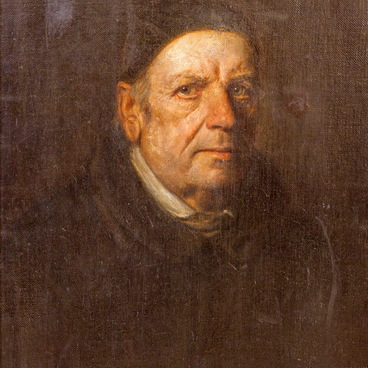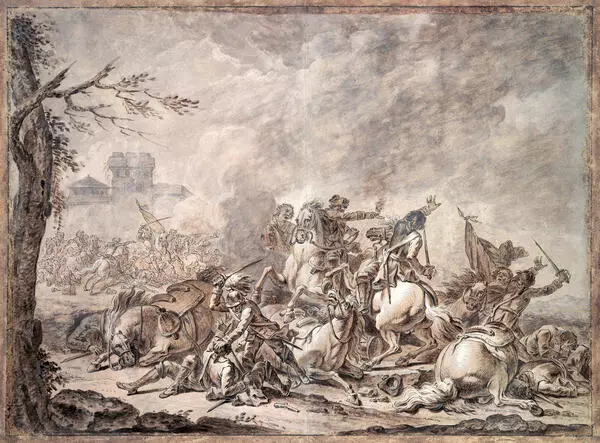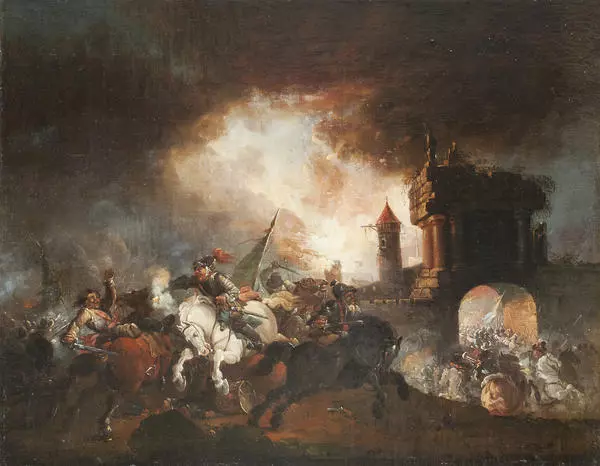To achieve authenticity, a battle painter should either witness military action or be directly involved in it. The young painter Jacques Courtois spent three years accompanying a French officer in military campaigns, exploring the life of soldiers, and getting first-hand experience that he would later use in his art. Jacques Courtois invented a new genre of battle painting: instead of creating a general view from above, or consequential frieze-like compositions, he depicted battles between cavalries as if he himself was among the soldiers.
Jacques Courtois was born in the village of Saint-Hippolyte, north-eastern France, in 1621. He was the son of the obscure painter Jean-Pierre Courtois. Jacques and his two brothers Guillaume and Jean-François learned the basics of painting from their father. When Jacques was 15 years old, the entire family moved to Italy where the young artists were introduced to Renaissance art.
Jacques Courtois was greatly inspired by the large fresco “The Battle of the Milvian Bridge” by Raphael and Giulio Romano. He studied at the school of the Dutch battle painter Jan Asselijn, explored the battle scenes created by Salvator Rosa and Michelangelo Cerquozzi, and made a final decision to become a battle painter.
All three brothers achieved popularity in Italy, but only Jacques Courtois left an indelible mark in the history of battle painting. In his works, Courtois typically depicted a landscape with ancient ruins, used symbolic detail, and crafted complex compositions that allowed the viewers to witness the battle played out in front of them. His paintings were very popular and easily recognizable. Courtois was known as “le Bourguignon” which was a reference to his origin in Burgundy, a region in France. Later generations of battle painters imitated Jacques Courtois and tried to mimic his style.
The Voronezh Regional Art Museum named after Ivan Kramskoy houses another painting by Jacques Courtois with a similar size, the same title, but slightly different composition. However, it lacks the impressive contrast, volume, and the feeling of air. Perhaps, it was painted earlier, and the artist took its weaknesses into account when working on the second “Battle Scene”.
Jacques Courtois was born in the village of Saint-Hippolyte, north-eastern France, in 1621. He was the son of the obscure painter Jean-Pierre Courtois. Jacques and his two brothers Guillaume and Jean-François learned the basics of painting from their father. When Jacques was 15 years old, the entire family moved to Italy where the young artists were introduced to Renaissance art.
Jacques Courtois was greatly inspired by the large fresco “The Battle of the Milvian Bridge” by Raphael and Giulio Romano. He studied at the school of the Dutch battle painter Jan Asselijn, explored the battle scenes created by Salvator Rosa and Michelangelo Cerquozzi, and made a final decision to become a battle painter.
All three brothers achieved popularity in Italy, but only Jacques Courtois left an indelible mark in the history of battle painting. In his works, Courtois typically depicted a landscape with ancient ruins, used symbolic detail, and crafted complex compositions that allowed the viewers to witness the battle played out in front of them. His paintings were very popular and easily recognizable. Courtois was known as “le Bourguignon” which was a reference to his origin in Burgundy, a region in France. Later generations of battle painters imitated Jacques Courtois and tried to mimic his style.
The Voronezh Regional Art Museum named after Ivan Kramskoy houses another painting by Jacques Courtois with a similar size, the same title, but slightly different composition. However, it lacks the impressive contrast, volume, and the feeling of air. Perhaps, it was painted earlier, and the artist took its weaknesses into account when working on the second “Battle Scene”.





